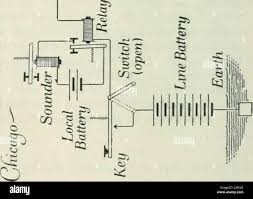The Impact of the Telegraph on Modern Communication

Introduction
The invention of the telegraph in the 19th century marked a turning point in global communication, allowing information to travel vast distances almost instantaneously. This groundbreaking technology not only transformed personal communication but also significantly impacted trade, journalism, and diplomacy. Understanding the role of the telegraph is crucial for appreciating the evolution of communication methods leading to today’s digital age.
The Birth of the Telegraph
Developed in the early 1800s, the telegraph was first commercially used by Samuel Morse and Alfred Vail. The pair created Morse code, a system that converted text into a series of dots and dashes, enabling messages to be transmitted over long distances using electrical signals. By 1844, the first long-distance telegraph line between Washington D.C. and Baltimore was operational, ushering in a new era of immediate communication.
Global Adoption and Impact
As the telegraph system expanded throughout the 19th century, nations began to recognise the potential benefits of rapid communication. By 1866, the first successful transatlantic telegraph cable was completed, connecting North America with Europe. This advance allowed for near-real-time political and commercial communication, making it vital for diplomatic relations and international trade.
The telegraph also drastically changed the landscape of journalism. News that once took days to be delivered could now be reported almost instantly, giving rise to the modern news agency model. Major publications began to use telegraphic messages, allowing them to keep their readers informed with unprecedented immediacy and accuracy.
Telegraph’s Decline and Legacy
Despite its significant contributions, the telegraph began to decline in the early 20th century with the advent of the telephone and wireless communication. These new technologies made it even easier for individuals to communicate without the need for complex coding. Yet, the fundamental principles of the telegraph continue to influence contemporary communication systems.
Conclusion
The telegraph not only transformed how humans communicated with one another but also laid the groundwork for future innovations in information technology. Understanding its historical importance helps us appreciate the evolution from simple code transmissions to the complex digital networks we rely on today. As we embrace more advanced communication technologies, reflecting on the telegraph’s impact reminds us of the continual human quest for connection across distances.








